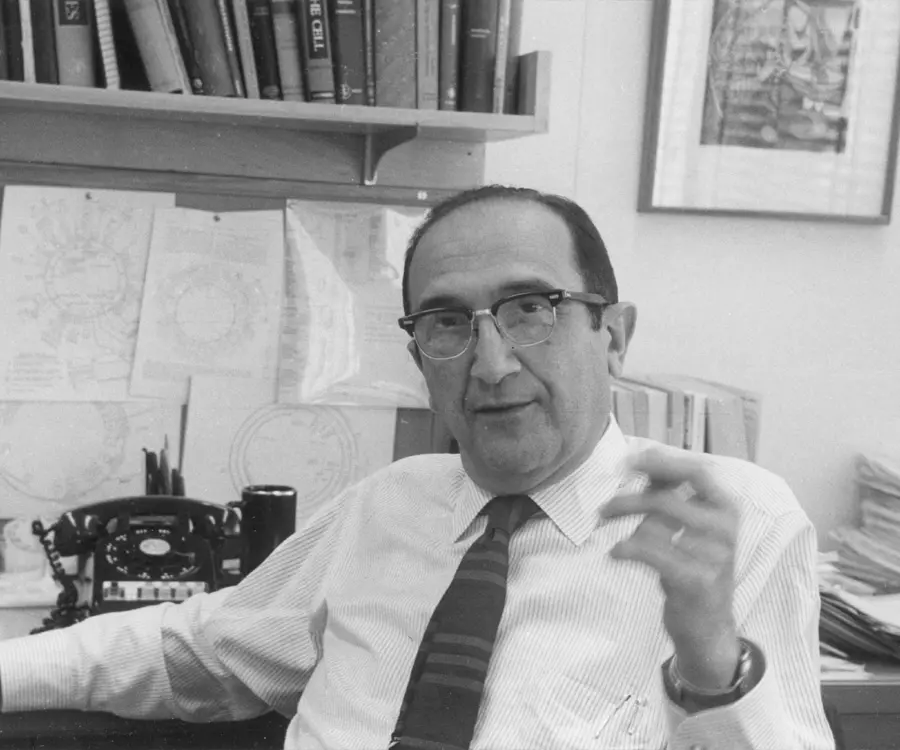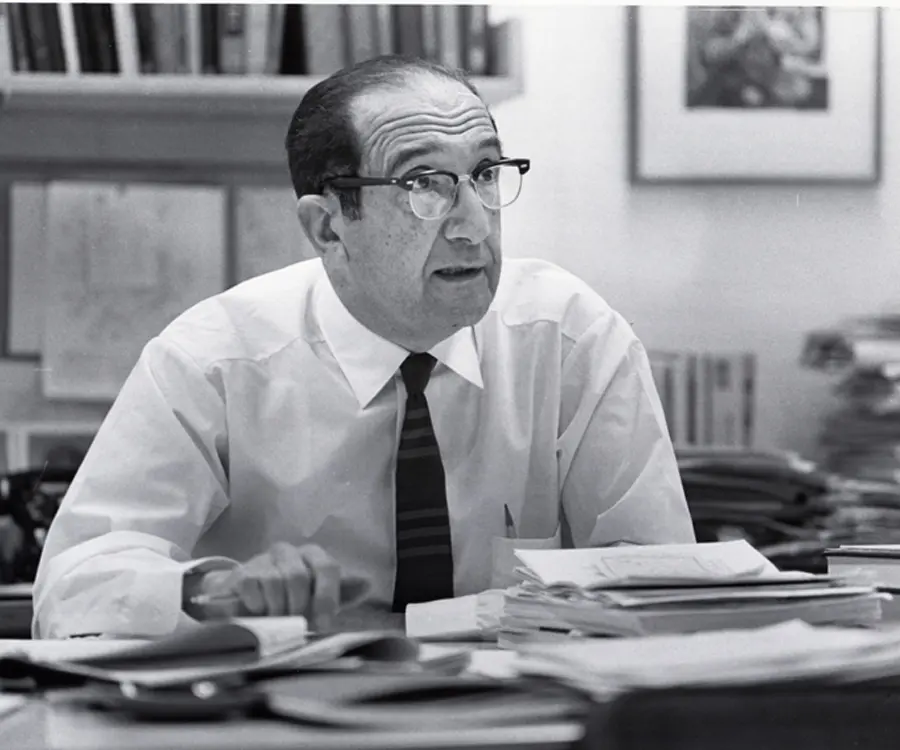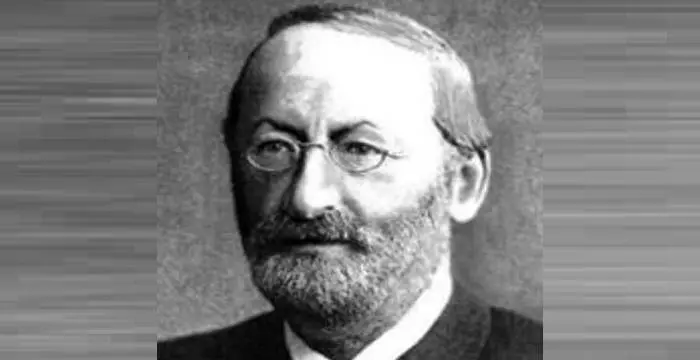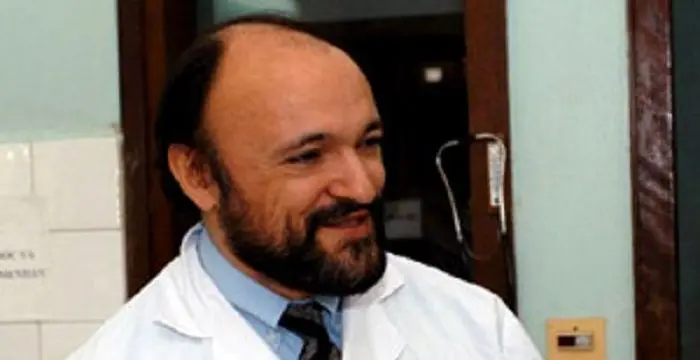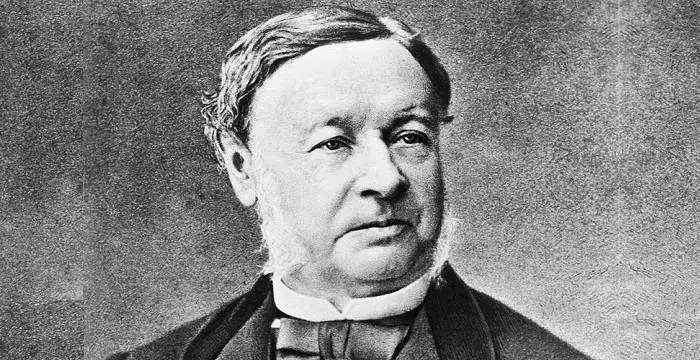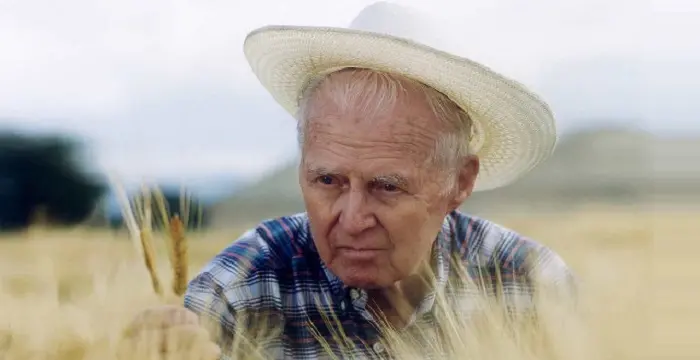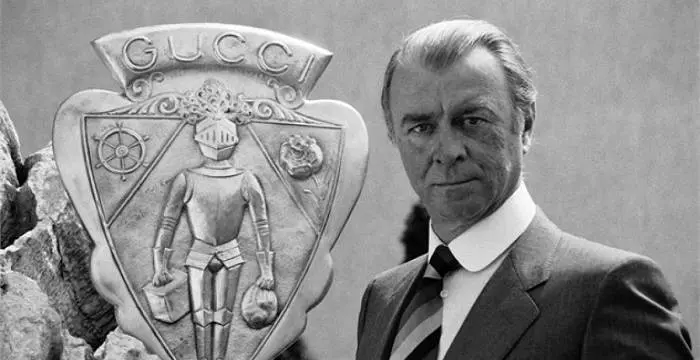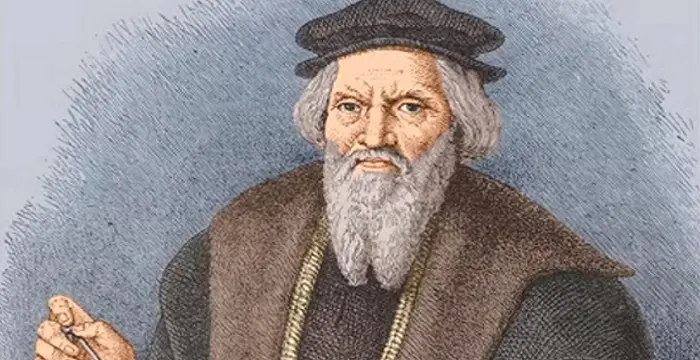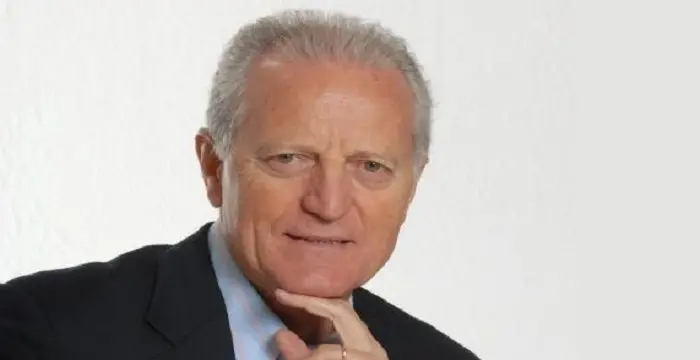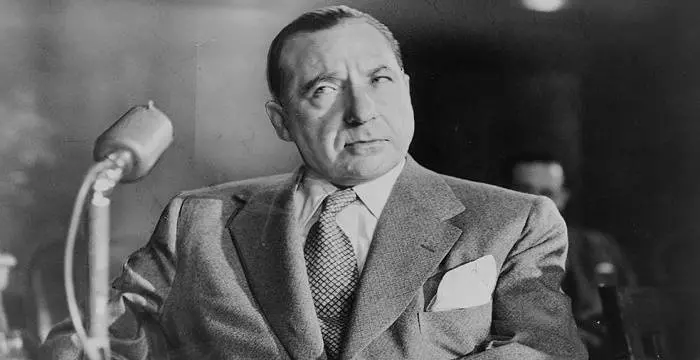
Salvador Luria - Microbiologists, Life Achievements and Childhood
Salvador Luria's Personal Details
Salvador E
| Information | Detail |
|---|---|
| Birthday | August 13, 1912 |
| Died on | February 6, 1991 |
| Nationality | Italian |
| Famous | Scientists, Biologists, Microbiologists |
| Spouses | Zella Hurwitz |
| Known as | Salvador Edward Luria |
| Birth Place | Turin, Italy |
| Gender | Male |
| Father | Davide Luria |
| Mother | Ester (Sacerdote) |
| Sun Sign | Leo |
| Born in | Turin, Italy |
| Famous as | Microbiologist |
| Died at Age | 78 |
// Famous Scientists
Juliane Koepcke
Juliane Koepcke is a German-Peruvian biologist, who was the lone survivor among the 92 passengers and crew of the ill-fated LANSA Flight 508 that crashed in the Peruvian rainforest on 24 December 1971. Know more about her life in this biography.
Henry Cavendish
Henry Cavendish was a theoretical chemist and physicist, renowned for discovery of hydrogen and calculation of the mass of earth. To know more about his childhood, profile, timeline and career read on
Konstantin Tsiolkovsky
Konstantin Tsiolkovsky was a Russian rocket scientist and a pioneer of astronautics. This biography provides detailed information about his childhood, family, personal life, career, achievements, etc.
Salvador Luria's photo
Who is Salvador Luria?
Salvador E. Luria was an Italian microbiologist who jointly won the Nobel Prize in Physiology or Medicine in 1969 with Max Delbrück and Alfred Hershey, for their discoveries on the replication mechanism and the genetic structure of viruses. Born in Turin, Italy, into an influential Jewish family, he attended the medical school at the University of Turin following which he served as a medical doctor in the Italian army for some time. He then proceeded to study radiology at the University of Rome where he developed an interest in bacteriophages—viruses that infect bacteria. A brilliant student, he received a fellowship to study in the United States. Italy at that time was under the fascist regime of Benito Mussolini which banned Jews from academic research fellowships. Frustrated, he moved to Paris, France. It was a politically chaotic period in Europe and the Nazi German armies invaded France in 1940, forcing Luria to escape to the United States. He continued his research in the US and soon met Delbrück and Hershey with who he conducted many experiments, including the seminal work which earned the trio the Nobel Prize. He eventually became a naturalized American citizen. Throughout his career, Luria was an outspoken political advocate and vehemently opposed war and nuclear weapon testing.
// Famous Microbiologists
Ferdinand Cohn
Ferdinand Cohn was a German biologist who is considered as the father of bacteriology and microbiology. Check out this biography to know about his childhood, life, achievements, works & timeline.
Louis Pasteur
Louis Pasteur was a French chemist and microbiologist who developed the first vaccines for rabies and anthrax. This biography of Louis Pasteur provides detailed information about his childhood, life, achievements, works & timeline.
Carlo Urbani
Italian epidemiologist Carlo Urbani was the first person who identified SARS as a highly contagious disease. Find out more about his life in this biography.
Childhood & Early Life
He was born Salvatore Edoardo Luria, in Turin, Italy, on August 13, 1912. His parents Ester (Sacerdote) and Davide Luria hailed from an influential Italian Sephardi Jewish family.
He went to the medical school at the University of Turin where he became acquainted with two other future Nobel laureates: Rita Levi-Montalcini and Renato Dulbecco. He graduated with an M. D. summa cum laude in 1935.
He served in the Italian Army as a medical officer during 1936-37 following which he enrolled for classes in radiology at the University of Rome. It was here that he developed an interest in bacteriophages—viruses that infect bacteria—and conducted genetic theory experiments on them.
In 1938, he received a fellowship to study in the United States. At that time Italy was reeling under the fascist regime of Benito Mussolini which prohibited Jews from academic research fellowships.
Frustrated at being denied this chance, Luria left Italy for Paris, France. The chaotic situation in Europe continued and the Nazi German armies invaded France in 1940. Luria was now forced to flee France as well. Fortunately he was able to receive an immigration visa to the United States.
Career
After arriving in the United States he changed the spelling of his name to Salvador Edward Luria. He was acquainted with the physicist Enrico Fermi who helped Luria receive a Rockefeller Foundation fellowship at Columbia University.
He met Max Delbrück and Alfred Hershey over the course of his research and the trio performed experiments at Cold Spring Harbor Laboratory and in Delbrück's lab at Vanderbilt University.
Delbrück introduced Luria to the American Phage Group, an informal scientific group dedicated to the study of viral self-replication. Luria was successful in obtaining one of the electron micrographs of phage particles while working with a member of the group.
Luria and Delbrück formed a very fruitful professional collaboration. In 1943 they performed what became known as the Luria–Delbrück experiment which demonstrated that in bacteria, genetic mutations arise in the absence of selection, rather than being a response to selection.
From 1943 to 1950 he served as the Instructor, Assistant Professor, and Associate Professor of Bacteriology at Indiana University. Luria became a naturalized citizen of the United States in January 1947.
In 1950 he was appointed Professor of Microbiology at the University of Illinois at Urbana–Champaign. In the 1950s he discovered that a culture of E. coli was able to significantly reduce the production of phages grown in other strains.
He took over the chair of Microbiology at the Massachusetts Institute of Technology (MIT) in 1959. During the later years of his career he shifted his research focus from phages to cell membranes and bacteriocins, and discovered that bacteriocins impair the function of cell membranes by forming holes in the cell membrane.
In 1964 he became Sedgwick Professor of Biology at the MIT and in 1972 he was appointed chair of The Center for Cancer Research at MIT.
A prominent political advocate throughout his career, he opposed nuclear weapon testing and was a detractor of the Vietnam War. His political activities led to his being blacklisted from receiving funding from the National Institutes of Health for a short time in 1969.
He was the Editor or Member of the Editorial Board of several journals including ‘Journal of Bacteriology’, ‘Journal of Molecular Biology’, ‘American Naturalist’, and ‘Proceedings of the National Academy of Sciences.’ He also authored a college textbook, ‘General Virology’ (1953), and a popular text for the general reader, ‘Life: The Unfinished Experiment’ (1973).
Major Works
Working along with Delbrück he made significant discoveries on the replication mechanism and the genetic structure of viruses, and showed that bacterial resistance to viruses (phages) is genetically inherited. Luria also proved the existence of spontaneous phage mutants.
Awards & Achievements
Salvador E. Luria along with Max Delbrück and Alfred D. Hershey was jointly awarded the Nobel Prize in Physiology or Medicine in 1969 "for their discoveries concerning the replication mechanism and the genetic structure of viruses".
Luria and Delbrück were jointly awarded the Louisa Gross Horwitz Prize for Biology or Biochemistry in 1969.
He received the National Medal of Science in 1991.
Personal Life & Legacy
Salvador E. Luria married Zella Hurwitz in 1945. His wife was a Professor of Psychology at Tufts University. They had one son, Daniel, who went on to become an economist.
He died of a heart attack on February 6, 1991, aged 78.
// Famous Biologists
Juliane Koepcke
Juliane Koepcke is a German-Peruvian biologist, who was the lone survivor among the 92 passengers and crew of the ill-fated LANSA Flight 508 that crashed in the Peruvian rainforest on 24 December 1971. Know more about her life in this biography.
Theodor Schwann
Theodor Schwann was a German physiologist who discovered the Schwann cells in the peripheral nervous system. This biography of Theodor Schwann provides detailed information about his childhood, life, achievements, works & timeline.
Norman Borlaug
Norman Borlaug was an American biologist known as the “Father of the Green Revolution”. This biography of Norman Borlaug provides detailed information about his childhood, life, achievements, works & timeline.
Salvador Luria's awards
| Year | Name | Award |
|---|---|---|
Other | ||
| 0 | Nobel Prize in Physiology or Medicine (1969) | |
| 0 | Louisa Gross Horwitz Prize (1969) | |
Salvador Luria biography timelines
- // 13th Aug 1912He was born Salvatore Edoardo Luria, in Turin, Italy, on August 13, 1912. His parents Ester (Sacerdote) and Davide Luria hailed from an influential Italian Sephardi Jewish family.
- // 1935He went to the medical school at the University of Turin where he became acquainted with two other future Nobel laureates: Rita Levi-Montalcini and Renato Dulbecco. He graduated with an M. D. summa cum laude in 1935.
- // 1936 To 1937He served in the Italian Army as a medical officer during 1936-37 following which he enrolled for classes in radiology at the University of Rome. It was here that he developed an interest in bacteriophages—viruses that infect bacteria—and conducted genetic theory experiments on them.
- // 1938In 1938, he received a fellowship to study in the United States. At that time Italy was reeling under the fascist regime of Benito Mussolini which prohibited Jews from academic research fellowships.
- // 1940Frustrated at being denied this chance, Luria left Italy for Paris, France. The chaotic situation in Europe continued and the Nazi German armies invaded France in 1940. Luria was now forced to flee France as well. Fortunately he was able to receive an immigration visa to the United States.
- // 1943Luria and Delbrück formed a very fruitful professional collaboration. In 1943 they performed what became known as the Luria–Delbrück experiment which demonstrated that in bacteria, genetic mutations arise in the absence of selection, rather than being a response to selection.
- // 1945Salvador E. Luria married Zella Hurwitz in 1945. His wife was a Professor of Psychology at Tufts University. They had one son, Daniel, who went on to become an economist.
- // 1950In 1950 he was appointed Professor of Microbiology at the University of Illinois at Urbana–Champaign. In the 1950s he discovered that a culture of E. coli was able to significantly reduce the production of phages grown in other strains.
- // 1953 To 1973He was the Editor or Member of the Editorial Board of several journals including ‘Journal of Bacteriology’, ‘Journal of Molecular Biology’, ‘American Naturalist’, and ‘Proceedings of the National Academy of Sciences.’ He also authored a college textbook, ‘General Virology’ (1953), and a popular text for the general reader, ‘Life: The Unfinished Experiment’ (1973).
- // 1959He took over the chair of Microbiology at the Massachusetts Institute of Technology (MIT) in 1959. During the later years of his career he shifted his research focus from phages to cell membranes and bacteriocins, and discovered that bacteriocins impair the function of cell membranes by forming holes in the cell membrane.
- // 1964 To 1972In 1964 he became Sedgwick Professor of Biology at the MIT and in 1972 he was appointed chair of The Center for Cancer Research at MIT.
- // 1969A prominent political advocate throughout his career, he opposed nuclear weapon testing and was a detractor of the Vietnam War. His political activities led to his being blacklisted from receiving funding from the National Institutes of Health for a short time in 1969.
- // 1969Salvador E. Luria along with Max Delbrück and Alfred D. Hershey was jointly awarded the Nobel Prize in Physiology or Medicine in 1969 "for their discoveries concerning the replication mechanism and the genetic structure of viruses".
- // 1969Luria and Delbrück were jointly awarded the Louisa Gross Horwitz Prize for Biology or Biochemistry in 1969.
- // 1991He received the National Medal of Science in 1991.
- // 6th Feb 1991He died of a heart attack on February 6, 1991, aged 78.
// Famous Italian peoples
Pietro Boselli
Pietro Boselli is an Italian model, engineer, teacher, and fitness athlete who became famous as the ‘world’s sexiest math teacher’. Check out this biography to know about his birthday, childhood, family life, achievements and fun facts about him.
Guccio Gucci
Guccio Gucci was a famous fashion designer from Florence, Italy, and the founder of the world-renowned fashion brand ‘Gucci.’ Check out this biography to know about his childhood, family, personal life, career, etc.
John Cabot
John Cabot was an Italian navigator and explorer who was the first European to discover the coast of North America. Check out this biography to know about his childhood, life, and achievements.
Santo Versace
Santo Domenico Versace is an Italian businessman and politician. Check out this biography to know about his birthday, childhood, family life, achievements, and fun facts about him.
Sophia Loren
Sophia Loren is an Italian film star known for her charm, elegance and beauty. This biography of Sophia Loren provides detailed information about her childhood, life, achievements, works & timeline
Frank Costello
Frank Costello was an Italian-American gangster and crime boss. This biography provides detailed information about his childhood, family, criminal activities, etc.
Salvador Luria's FAQ
What is Salvador Luria birthday?
Salvador Luria was born at 1912-08-13
When was Salvador Luria died?
Salvador Luria was died at 1991-02-06
Which age was Salvador Luria died?
Salvador Luria was died at age 78
Where is Salvador Luria's birth place?
Salvador Luria was born in Turin, Italy
What is Salvador Luria nationalities?
Salvador Luria's nationalities is Italian
Who is Salvador Luria spouses?
Salvador Luria's spouses is Zella Hurwitz
Who is Salvador Luria's father?
Salvador Luria's father is Davide Luria
Who is Salvador Luria's mother?
Salvador Luria's mother is Ester (Sacerdote)
What is Salvador Luria's sun sign?
Salvador Luria is Leo
How famous is Salvador Luria?
Salvador Luria is famouse as Microbiologist



